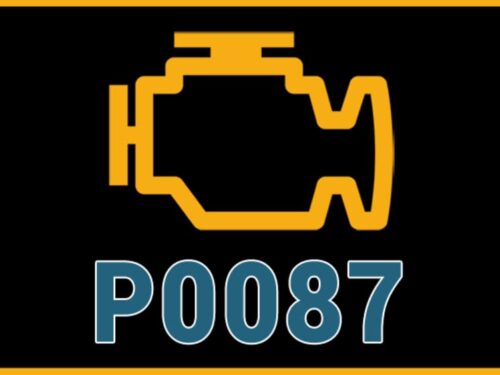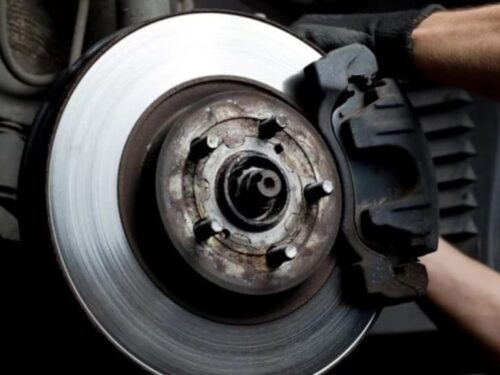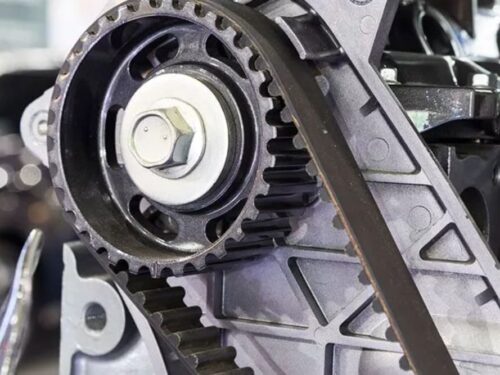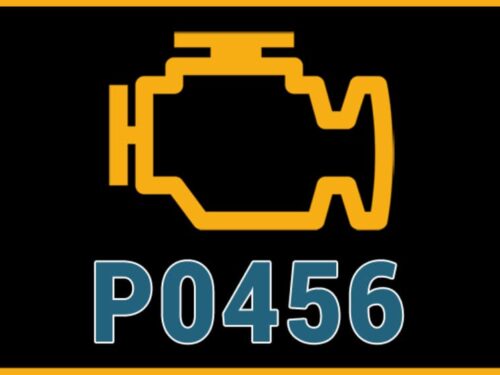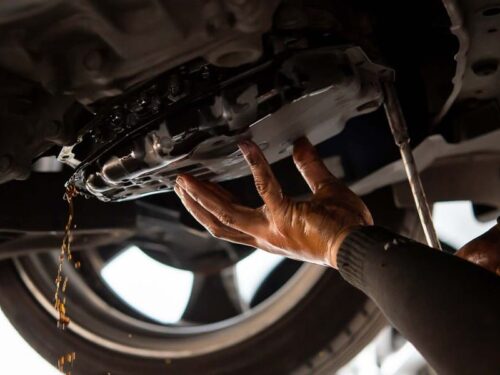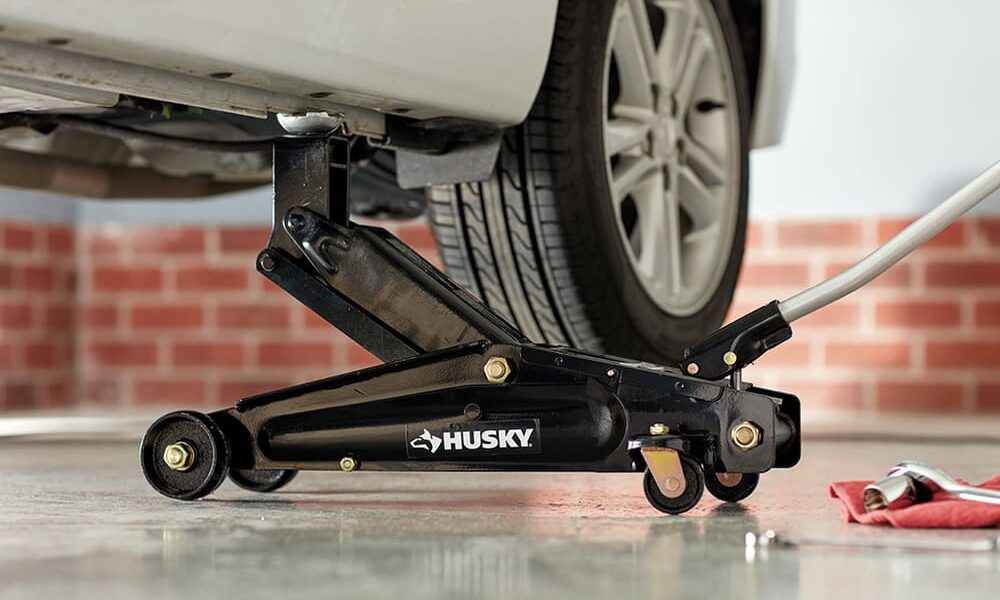
Changing your tire, working on your brakes, and looking for leaks are just some reasons why you’ll have to lift your car. If you’ve ever performed vehicle maintenance, then you’ll know the importance of a car jack. Most car owners who are new to vehicle maintenance aren’t aware of the intricacies involved when using a car jack and may compromise on their safety unknowingly. It is therefore essential to know how to use a car jack properly.
Moreover, you’ll need to keep in mind the different vehicle jacks out there and the one suitable for your car. Let’s explore some of their kinds and how to use each of them properly when lifting your car off the ground.
Scissor Jack
A scissor jack is the most common type of car jack and comes as a standard jack for most vehicles when purchased. They are portable when fully closed and don’t require much maintenance other than oiling or greasing their parts.
The scissor jack is a type of mechanical jack that consists of two arms connected at their ends via hinges. One end of each arm connects to the base of the jack and the other to the saddle that makes contact with the lifting point on your car. Each arm is divided into two sections, with another hinge in between. These hinges are special because a screw runs through them. These two hinges can be brought close to each other by turning the screw clockwise. This causes the arms to extend and lift up your car.
The mechanism used by a scissor jack is simple and easy to use, making it a reliable option for many cases. However, a scissor jack is not meant for everyday maintenance and is more of an option provided by car manufacturers in cases of emergency, like changing a flat tire when on the road. They can’t lift heavy loads and are normally rated at 3000 lbs. Make sure you check their rating before using them; otherwise, its screw may bend and break.
Bottle Jacks
As their name implies, bottle jacks look like cylindrical containers. They are a type of hydraulic car jack that uses the power of Pascal’s Law when lifting.
Bottle jacks consist of two cylinders. One is smaller than the other and has a piston inside connected to a hinge on the outside. The hinge connects to a lever which can be used to move the smaller piston up and down. Inside the cylinder is the hydraulic fluid that gets forced into the larger cylinder when the lever is moved. The larger cylinder has a saddle on the outside that connects to the jacking point of your car.
The difference in diameters of the piston allows the exchange of force while keeping the hydraulic pressure constant. The force applied gets multiplied every time the lever is turned, allowing you to lift your car with ease. To bring your car down to the ground, a screw needs to be turned anti-clockwise. Make sure you turn it slowly, so that fluid in the large cylinder does not get released very quickly, preventing your car from slamming to the ground.
Bottle jacks have a small form factor, enabling you to store them easily. They also have a higher lifting capacity than scissor jacks, up to 50 tons, but for most cases, a 2 ton rated one should suffice. 2 ton (4000 lbs.) jacks are relatively inexpensive and can lift most sedans and SUVs, an ideal car jack to have around the house for home repairs.
Floor jacks
Floor jacks are another type of hydraulic car jack that uses the same working principle as bottle jacks. The two differ in their design. In a bottle jack, all the force is translated vertically, however in a floor jack, the lever pushes fluid to turn an arm upwards, and the force gets translated from horizontal to vertical. The arm has a saddle on its end that connects to your car’s lifting point and sits comfortably within the body of the floor jack when not extended. Hence, the floor jack is closer to the ground, great for cars with a low profile.
Additionally, floor jacks have a wider base with wheels attached to allow for better positioning of the jack when lifting your car. This wider base also provides more stability, preventing your jack from toppling over when your car is lifting from the ground.
The downside of using a floor jack is that they are quite bulky car jacks and aren’t easy to store.It is for this reason that you’ll find them in car repair shops that have plenty of storage space.
How to Use a Car Jack Properly
If used incorrectly, lifting your car can become a dangerous endeavor, leading to cuts, bruises, and, in some cases, even death. You might be hesitant at first, but consulting your owner’s manual is a great place to start.
SAFETY TIPS TO KEEP IN MIND BEFORE LIFTING YOUR CAR
- Make sure the vehicle is on level ground. It provides a stable base for the car jack and prevents any excessive weight from being exerted on it.
- If you’re parked on loose soil or mud, place the car jack on a wider base plate or a plank of wood so that you gain more stability when lifting your car.
- Make sure your car is in park, has the e-brake turned up, or in first gear (if manual) so that it doesn’t move and fall while being raised off the ground. Consider investing in wheel chocks for extra safety.
- Never use a car jack for extended periods. If you want to keep your car lifted off the ground, consider investing in jack stands instead.
- Inspect your car jack before using it. It should be rated for the car’s weight. Consult your owner’s manual for these specifications and the rating sticker on your car jack. Look for any defects in your car jack. A scissor jack may have bent or broken hinges and screws, and a hydraulic jack may leak fluid. Fully extend them once before using them on your car to check their functionality.
- When on a busy freeway or highway, turn on your hazard lights and wait for help. Changing your car tire in such places may endanger your life and the lives of others.
Lifting your Car
Once you’ve taken all the necessary safety precautions, you can go ahead with lifting your car.
STEP 1: LOCATE THE LIFTING POINTS ON YOUR CAR
Your user manual will highlight several points near the front and rear wheels from where to place the jack saddle and lift up your car. Placing your jack elsewhere can damage the underbody, topple the jack, and lead to costly repairs.
STEP 2: POSITIONING THE CAR JACK
Place the car jack such that it sits under the jacking points. You can adjust the positioning as the saddle connects to the lifting point.
STEP 3: LIFTING THE CAR
If you have a scissor jack, use its accompanying crank to turn the screw in a clockwise direction until your car lifts sufficiently from the ground.
If you have a bottle or floor jack, make sure its screw is turned clockwise before you place the lever in its position. Jerk the lever in an up and down motion to lift up your car.
With each jack, you’ll feel the weight of the car as you lift it up.
Final Word
Knowing how to use a car jack is one of the most basic skills that every car owner should be aware of. It can help you in emergencies, given you fulfill all the safety requirements prior to lifting. Like every skill, it requires practice to master, and after a few tries, you’ll find that it’s quite an easy job.
Your owner’s manual is the best resource for you if you’re looking to gain more knowledge on this subject and will tell you how to lift your car safely. If you’re still unsure, try asking for help from experienced professionals as they may be better at guiding you.
Courtesy of paautoinspection




